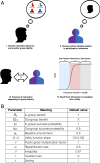Inequality, identity, and partisanship: How redistribution can stem the tide of mass polarization
- PMID: 34876507
- PMCID: PMC8685720
- DOI: 10.1073/pnas.2102140118
Inequality, identity, and partisanship: How redistribution can stem the tide of mass polarization
Abstract
The form of political polarization where citizens develop strongly negative attitudes toward out-party members and policies has become increasingly prominent across many democracies. Economic hardship and social inequality, as well as intergroup and racial conflict, have been identified as important contributing factors to this phenomenon known as "affective polarization." Research shows that partisan animosities are exacerbated when these interests and identities become aligned with existing party cleavages. In this paper, we use a model of cultural evolution to study how these forces combine to generate and maintain affective political polarization. We show that economic events can drive both affective polarization and the sorting of group identities along party lines, which, in turn, can magnify the effects of underlying inequality between those groups. But, on a more optimistic note, we show that sufficiently high levels of wealth redistribution through the provision of public goods can counteract this feedback and limit the rise of polarization. We test some of our key theoretical predictions using survey data on intergroup polarization, sorting of racial groups, and affective polarization in the United States over the past 50 y.
Keywords: cultural evolution; inequality; polarization; risk aversion.
Conflict of interest statement
The authors declare no competing interest.
Figures





References
-
- Mudde C., Kaltwasser C. R., Populism: A Very Short Introduction (Oxford University Press, 2017).
-
- Ahler D. J., The group theory of parties: Identity politics, party stereotypes, and polarization in the 21st century. Forum 16, 3–22 (2018).
-
- Mason L., Kalmoe N. P., What you need to know about how many Americans condone political violence — and why. The Washington Post, 11 January 2021. https://www.washingtonpost.com/politics/2021/01/11/what-you-need-know-ab.... Accessed 13 August 2021.
-
- Fiorina M. P., Abrams S. J., Pope J. C., Culture War? The Myth of a Polarized America (Pearson Longman, New York, 2005).
-
- Abramowitz A., The Disappearing Center: Engaged Citizens, Polarization, and American Democracy (Yale University Press, 2010).
LinkOut - more resources
Full Text Sources
Miscellaneous

